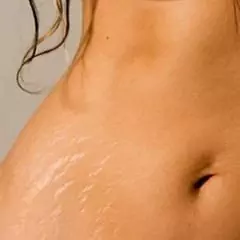Inhalation for bronchitis to remove phlegm at home
The content of the article:
- Inhalation rules
- Inhalation of drugs for bronchitis
- Inhalation with a nebulizer for bronchitis
- What other inhalations can be done with bronchitis
- Overview of bronchitis
- Video
Usually, inhalation helps to remove sputum in bronchitis very well, for this reason, this method is usually complementary to the main therapy. Their advantage of inhalation is the penetration of the drug substance deep into the respiratory tract. This helps to moisturize the mucous membrane, eliminate bronchial edema, reduce inflammation, improve sputum discharge and speedy regeneration of affected tissues.
Whether it is possible to do inhalation with bronchitis depends on the form of the disease and its clinical manifestations. The specialist will explain what means can be used for inhalation for bronchitis at home in adults and children, how to breathe correctly, and select the optimal dosage of medicines.

Hot steam inhalation should not be given to children or patients with high fever
Inhalation with hot steam is contraindicated when the temperature rises above 37.5 ° C, some pathologies of the cardiovascular and respiratory system, frequent bleeding from the nose and some other conditions. In some cases, inhalations can contribute to the spread of an infectious inflammatory process to the deep parts of the respiratory system. With self-administration of inhalations, allergic reactions are not uncommon, with edema and obstruction of the bronchi. Therefore, they should not be carried out without consulting a doctor.
Inhalation rules
The procedure should be started no earlier than an hour after a meal, after which it should also take about an hour before the next meal.
The duration of inhalation is from 1-2 to 10 minutes, it is determined by the means that is used for the procedure. 1 to 5 inhalations are carried out per day, more than 5 procedures per day are contraindicated.
It is advisable to wear clothing that does not constrain breathing.
Inhale and exhale the drug slowly. You should not talk or engage in any other activity.
For an hour after inhalation, do not smoke, go outside in the cold season, avoid sudden changes in air temperature.
Increased physical activity is not recommended after the procedure.
If an allergic reaction to the agent that was used for inhalation develops, the procedure should be stopped immediately and consult a doctor.
In addition to steam inhalation, the procedure can be carried out using a nebulizer, sprays, such methods are preferred in most cases. An inhaler for bronchitis is used both in a medical institution and at home - it can be purchased at a pharmacy, rented at a clinic or come to a clinic for procedures.
Inhalation of drugs for bronchitis
Medication for inhalation should be used at the prescribed dosage, otherwise the procedure may do more harm than good.
In acute bronchitis, when the cough is still dry at the initial stages of the pathology, inhalations with soda, mineral water, saline can be carried out. One inhalation with a nebulizer usually requires about 4 ml of mineral water. When the patient begins to separate sputum, mucolytics and expectorants can be used for inhalation.
Medicines often used for bronchitis include Lazolvan, which helps to thin and remove phlegm. It is suitable for inhalation for both adults and children. The drug is poured into the inhaler, mixed with saline in equal amounts.
A 1% solution of chlorophyllipt can also be used, which is diluted with saline in a ratio of 1:10 before use.
In special cases, steroids may be prescribed. From glucocorticosteroids, Pulmicort is used as a drug for inhalation.
Popular topical bronchodilator drugs include Berodual, which has a minimal number of side effects. The drug prevents the occurrence of asthma attacks during bronchial obstruction.
Inhalation with a nebulizer for bronchitis
Inhalation with a nebulizer is highly effective, during which the active substance is able to penetrate even the smallest bronchi, forming the so-called cold vapor. With the help of this device, you can do inhalations with drugs (mucolytics, bronchodilators, antibacterial drugs). The nebulizer can be used for inhalation for small children and the elderly. In addition to medicines for inhalation with bronchitis, an alkaline mineral water, alkaline solutions can be used with a nebulizer, but essential oils, infusions and decoctions of medicinal herbs are not suitable for this.
Nebulizers are divided into compression and ultrasonic, depending on the method of nebulization. The particle size of the aerosol of the drug or solution depends on the nebulizer model. With bronchitis, it is usually required to obtain a medium-dispersed (up to 4 micron) aerosol, the particles of which penetrate the lower respiratory tract without settling in the upper respiratory tract.
Inhalation with a nebulizer is especially effective for obstructive bronchitis.
In case of spasm of the bronchi, bronchodilators may be prescribed to expand them, which can also be used by this method.
After inhalation with a nebulizer, it is recommended to rinse the mouth with water in order to rinse off the drug residues.

The nebulizer allows you to deliver the drug to the small bronchi
The use of "cold steam" is prohibited in case of pulmonary hemorrhage, severe cardiac arrhythmias, heart failure, allergic reactions to inhalation drugs.
What other inhalations can be done with bronchitis
When coughing, according to the reviews of patients and doctors, folk recipes for plant-based inhalation products contribute to a speedy recovery.
Chamomile, calendula, peppermint, St. John's wort, raspberry leaves, marsh rosemary, sage, eucalyptus, juniper, oregano are used for inhalations to remove phlegm for bronchitis at home.
You can also use herbal preparations. So, with difficult sputum, a mixture of chamomile officinalis (25 g), primrose leaves (20 g), elder flowers (15 g), thermopsis or pine buds (1 g) is effective. A decoction is prepared from these ingredients, which should be diluted with boiling water for inhalation.
Of the essential oils for inhalation, the oils of eucalyptus, juniper, pine, lavender, thuja, and tea tree are usually used. To prepare a solution, add no more than 5 drops of essential oil to 1 glass of water.
With the help of essential oils, so-called cold inhalations can be performed. To do this, you can drip oil onto a napkin and inhale the vapors for up to 7 minutes.
In obstructive bronchitis, essential oils and medicinal plants for inhalation are not used, as this can lead to aggravation of edema and spasm of the bronchi. With this form of the disease, inhalations are carried out with mineral water, drugs, saline.
A popular folk remedy for bronchitis is steam inhalation from freshly boiled potatoes.
To carry out the procedure with garlic or onions, they are crushed and added to the prepared solution for inhalation.
To prepare a solution of sea salt for inhalation for 1 liter of water, take 3 tablespoons of salt. You can add 1 teaspoon of baking soda to the resulting solution.
With bronchitis, you can do dry inhalation with sea salt. For this, crushed salt is heated in a frying pan, poured into a container suitable for the procedure and breathed over it. In this case, the salt must be stirred periodically.
Mineral water for inhalation should be slightly alkaline and free of gases, it can be used for adults and pediatric patients. Mineral water moisturizes the mucous membranes of the respiratory tract, promotes liquefaction and excretion of phlegm.
An important point: folk remedies can be used for inhalation for bronchitis at home in adults, they are not used in children's practice.
Overview of bronchitis
Bronchitis is a common disease of the respiratory system, in which the bronchial mucous membranes are affected by the inflammatory process. With progression and chronicity, inflammation can spread to the deeper tissues of the bronchi.
Bronchitis often occurs against the background of acute respiratory infections, and may have a non-infectious or infectious etiology. Most often, viruses are the causative agent of infectious bronchitis, much less often bacteria act as an infectious agent, in addition, with bronchitis, a secondary bacterial infection can be attached. Fungi cause bronchitis extremely rarely, it occurs in weakened children, people with immunodeficiency, etc.
Risk factors for the development of bronchitis include a genetic predisposition, the presence of chronic infectious processes in the body, a decrease in immunity, the presence of bad habits and / or industrial hazards, an unfavorable environmental situation, hypothermia of the body, frequent stressful situations, unhealthy diet, inhalation of chemicals, the presence of allergies.

Inhalation using folk remedies can only be carried out by adults
Bronchitis can be acute and chronic, chronic most often develops with improper treatment of the acute form. At the onset of the disease, patients may have nasal congestion, sore throat and its redness, chest discomfort, nasal discharge. The main symptom of bronchitis is a cough, at first dry and then wet. Patients also have difficulty breathing, weakness, lethargy, decreased performance, pain in the sternum, headache, body temperature may rise to subfebrile values.
Usually bronchitis is treated at home, but in some cases, hospitalization may be required. A patient with acute bronchitis or an exacerbation of a chronic one in the first week of the disease is shown bed rest.
Video
We offer for viewing a video on the topic of the article.

Anna Aksenova Medical journalist About the author
Education: 2004-2007 "First Kiev Medical College" specialty "Laboratory Diagnostics".
Found a mistake in the text? Select it and press Ctrl + Enter.







